Flag of Lithuania
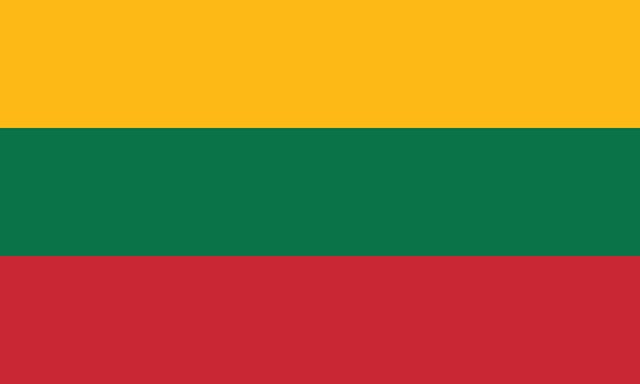
Lithuanian flag
- Official approval of the flag: 1989
- Flag emoji: 🇱🇹
- Period: Modern flags
- Type of flag: Flags of countries • Flags of continental countries
- Belonging to the continent: Europe
- Colors on the flag: yellow • green • red
- Emblem on the flag: Without emblem
Lithuania is located in Northern Europe, bordering Latvia, Belarus, Poland, and Russia, and is washed by the Baltic Sea to the west. Its capital is Vilnius. The country’s area is 65,300 km², with a population of about 2.8 million people. The official language is Lithuanian, one of the oldest Indo-European languages, and Polish and Russian are also spoken in some regions. Lithuania gained independence from the Soviet Union in 1990. The main national composition is Lithuanians, with communities of Poles, Russians and Belarusians.
The flag of Lithuania, known as the “yellow-green-red tricolor”, is the official symbol of the Republic of Lithuania. Its bright colors reflect the country’s natural and national characteristics, as well as the Lithuanian people’s aspirations for independence and unity.
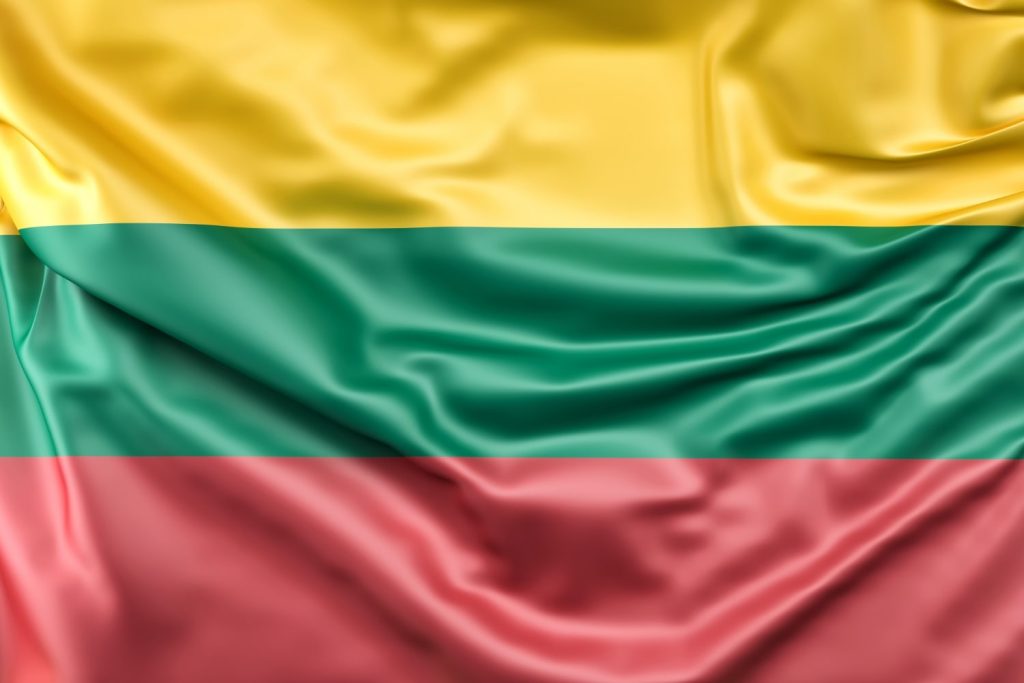
History of the Lithuanian flag
The Lithuanian flag has long historical roots, closely connected with the national revival and the struggle for independence.
The origin of the flag
- XIV-XVI centuries: In the Grand Duchy of Lithuania, the main symbol was a red flag with a white knight (Vytis), which is still used as the national emblem of Lithuania.
- XIX century: During the Lithuanian national revival, the idea of creating a separate national flag emerged.
Modern flag
- 1918: After the declaration of Lithuanian independence on February 16, the modern yellow-green-red tricolor was approved.
- 1940-1990: During the Soviet occupation, the Lithuanian flag was banned and the flag of the Lithuanian SSR was used instead.
- March 20, 1989: Even before the official restoration of Lithuanian independence, the historic tricolor was returned as the national symbol.
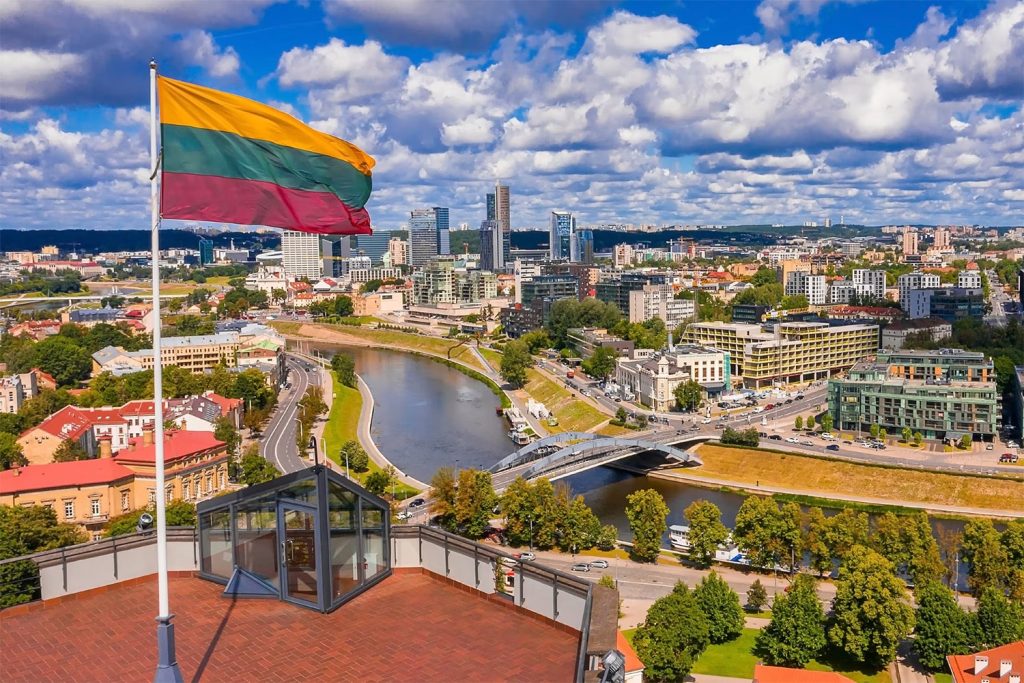
Colors of the Lithuanian flag
Meaning of the colors of the flag
Each of the three colors of the Lithuanian flag has a symbolic meaning:
- Yellow:
- Symbolizes the sun, light and prosperity.
- It represents the rich wheat fields of Lithuania.
- Green:
- Represents nature, forests and hope.
- It symbolizes freedom and vitality of the people.
- Red:
- Symbolizes the blood shed for Lithuania’s independence.
- It represents courage, struggle and national pride.
Color codes
The official colors of the Lithuanian flag are approved to accurately reflect its design:
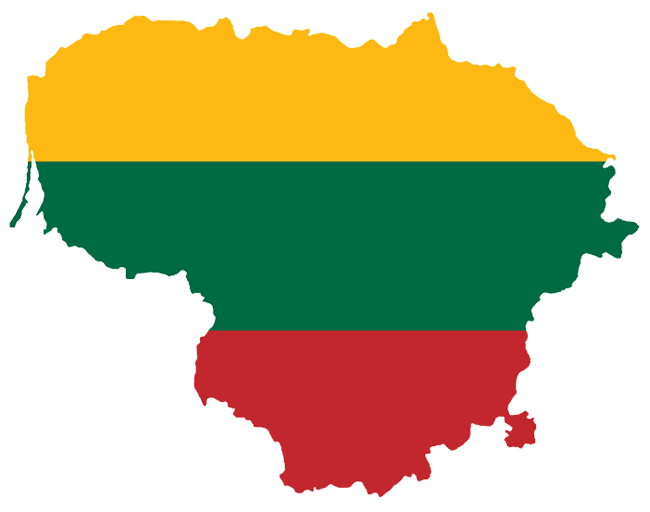
- Yellow:
- RGB: (253, 185, 19)
- HEX: #FDB913
- CMYK: (0, 27, 94, 1)
- Pantone: 123 C
- Green:
- RGB: (0, 106, 68)
- HEX: #006A44
- CMYK: (100, 0, 64, 58)
- Pantone: 356 C
- Red:
- RGB: (200, 16, 46)
- HEX: #C8102E
- CMYK: (0, 92, 77, 22)
- Pantone: 186 C
Format and proportions
The flag of Lithuania has a traditional horizontal tricolor design.
Flag proportions
The official aspect ratio of the flag is 3:5, which is standard for many national flags.
The arrangement of the stripes
- The top stripe is yellow.
- The middle stripe is green.
- The bottom stripe is red.
In the case of vertical hanging, the order of colors remains unchanged, from top to bottom: yellow, green, red.
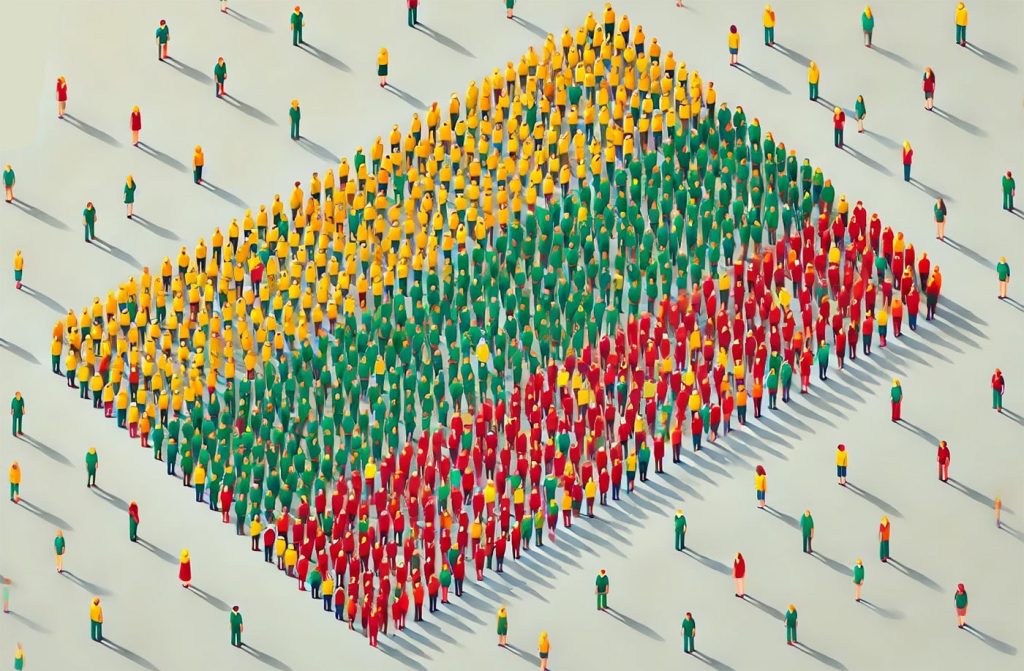
Interesting facts about the flag of Lithuania
- A combination of nature and history: The colors of the Lithuanian flag reflect both the country’s natural landscapes and national ideals.
- An alternative historical flag: Along with the tricolor, Lithuania also officially uses an ancient coat of arms with a white knight on a red background.
- Flag Day: The Lithuanian Flag Day is celebrated on January 1, when in 1919 the Lithuanian tricolor was first raised over Vilnius’s Gediminas Tower.
The Lithuanian flag is an important symbol of national identity, freedom and historical heritage. Its vibrant colors emphasize the vitality of the Lithuanian people and their desire for independence and prosperity.
